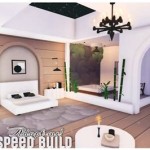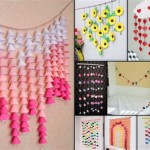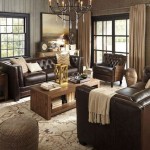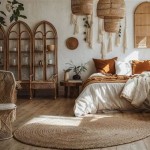Modern Farmhouse Decor Ideas: Blending Rustic Charm with Contemporary Style
Modern farmhouse decor represents a harmonious blend of rustic, traditional farmhouse elements with the clean lines and minimalist aesthetic of contemporary design. It is a style that evokes feelings of warmth, comfort, and authenticity while still feeling fresh, current, and uncluttered. The appeal of modern farmhouse lies in its ability to create a welcoming and livable space that feels both stylish and timeless. This style is not about recreating a historical farmhouse but rather about interpreting the essence of that aesthetic for modern living.
The core principles of modern farmhouse design revolve around creating a balanced atmosphere. This balance is achieved by juxtaposing rough textures with smooth surfaces, incorporating natural materials alongside sleek finishes, and carefully selecting a color palette that is both calming and inviting. The goal is to avoid a space that feels overly rustic or sterile, instead aiming for a comfortable and aesthetically pleasing environment.
Several key elements contribute to the overall success of a modern farmhouse aesthetic. These include the use of natural materials, a neutral color palette, intentional pops of color, strategic incorporation of vintage or antique pieces, and a focus on functional and comfortable furniture. Understanding these elements is crucial for effectively implementing modern farmhouse design in any space.
Key Element 1: Embracing Natural Materials
The incorporation of natural materials is fundamental to achieving a modern farmhouse look. These materials bring warmth, texture, and a sense of connection to the outdoors, which are all hallmarks of the style. Popular choices include wood, stone, metal, and natural fibers.
Wood is perhaps the most important natural material in modern farmhouse design. It can be incorporated in a variety of ways, from exposed beams and shiplap walls to hardwood floors and rustic furniture. Reclaimed wood is particularly desirable, as it adds character and a sense of history to the space. When selecting wood, consider the grain and texture. Rougher, more natural finishes tend to enhance the farmhouse aesthetic.
Stone is another excellent choice for adding natural texture and visual interest. It can be used for fireplaces, accent walls, or even kitchen backsplashes. Like wood, stone comes in a variety of colors and textures, allowing for customization. Natural stone options like limestone or slate are generally preferred over highly polished or artificial alternatives.
Metal accents can introduce an industrial edge that complements the rustic elements. Wrought iron fixtures, galvanized steel accents, and copper details can add visual interest and a touch of sophistication. Consider incorporating metal in lighting fixtures, hardware, or even decorative accessories.
Natural fibers such as cotton, linen, jute, and wool are essential for creating a comfortable and inviting atmosphere. These materials can be used in upholstery, rugs, curtains, and throw blankets. They add softness and texture, helping to balance the harder elements of wood, stone, and metal.
Key Element 2: The Importance of a Neutral Color Palette with Intentional Pops of Color
A neutral color palette forms the foundation of most modern farmhouse interiors. This typically includes shades of white, cream, gray, and beige. These colors create a calming and versatile backdrop that allows other elements to stand out. The use of a neutral palette also contributes to the sense of spaciousness and light that is characteristic of modern design.
White is a particularly popular choice for walls and cabinetry, as it reflects light and creates a clean, fresh look. Different shades of white can be used to add depth and dimension to the space. Cream and beige offer a warmer alternative to white, creating a more inviting atmosphere. Gray can be used to add a touch of sophistication and modernity.
While a neutral palette is essential, it is important to incorporate intentional pops of color to prevent the space from feeling bland or monotonous. These pops of color can be introduced through furniture, artwork, accessories, or even accent walls. Consider using muted or earthy tones, such as blues, greens, yellows, or reds, to maintain a cohesive aesthetic.
The key is to use color sparingly and strategically. Avoid overwhelming the space with too many bright or bold colors. Instead, focus on creating a harmonious balance between neutral tones and carefully selected accents. Consider using a color wheel to guide your choices and ensure that the colors complement each other effectively.
Texture can also play a role in adding visual interest to a neutral space. Different textures, such as woven baskets, knitted throws, or rough-hewn wood, can add depth and dimension without relying solely on color. This is especially important in rooms with limited natural light, where relying solely on color can make the space feel even darker.
Key Element 3: Strategic Incorporation of Vintage and Antique Pieces
The inclusion of vintage or antique pieces is crucial for adding character, history, and a sense of authenticity to a modern farmhouse interior. These pieces can serve as focal points, conversation starters, and reminders of a simpler time. However, it is important to incorporate them strategically to avoid creating a space that feels cluttered or outdated.
Consider selecting a few key vintage or antique pieces to serve as focal points in each room. These could include a vintage dresser, a farmhouse table, an antique mirror, or a collection of vintage jars. Choose pieces that speak to you and that reflect your personal style.
When selecting vintage or antique pieces, pay attention to their condition. While imperfections can add character, it is important to ensure that the pieces are structurally sound and safe to use. Consider refinishing or reupholstering pieces as needed to bring them up to date while still preserving their original charm.
Mix vintage and antique pieces with modern furniture and accessories to create a balanced and eclectic look. This juxtaposition of old and new is a key characteristic of modern farmhouse design. Consider pairing a vintage dresser with a modern bed frame or an antique mirror with a contemporary sofa.
Do not be afraid to repurpose vintage or antique items for new uses. An old ladder can be used as a towel rack, a vintage window can be used as a decorative piece, or an antique trunk can be used as a coffee table. This creative approach adds a unique and personal touch to your space.
Flea markets, antique stores, and online marketplaces are excellent sources for finding vintage and antique pieces. Take your time, browse carefully, and be patient. Finding the perfect pieces may take time, but the effort is worth it when you find something truly special that adds character and charm to your home.
Incorporating these key elements – natural materials, a neutral color palette with intentional pops of color, and the strategic use of vintage and antique pieces – allows one to effectively create a modern farmhouse aesthetic. These elements, when executed thoughtfully, will result in a space that is both stylish and inviting.
Beyond these key elements, several other details contribute to a successful modern farmhouse design. These include considerations for lighting, furniture choices, and the overall layout of the space. Mindful application of these details further enhance the overall aesthetic.
Lighting plays a crucial role in setting the mood and highlighting the architectural features of a modern farmhouse interior. Consider incorporating a mix of natural and artificial light sources. Maximize natural light by using sheer curtains and strategically placing mirrors. Add ambient lighting with recessed lights or chandeliers, task lighting with desk lamps or pendant lights, and accent lighting with wall sconces or spotlights.
Furniture choices should prioritize comfort, functionality, and visual appeal. Opt for comfortable sofas and chairs upholstered in natural fabrics such as linen or cotton. Choose furniture with clean lines and simple silhouettes to complement the contemporary aesthetic. Consider incorporating a few statement pieces, such as a farmhouse table or a vintage armchair, to add character and visual interest.
The overall layout of the space should be open and inviting, encouraging a sense of connection and community. Consider creating an open-concept living area that combines the kitchen, dining room, and living room. This allows for easy flow and interaction between family members and guests. Use rugs and furniture to define distinct zones within the open space.
By carefully considering all of these elements, one can create a modern farmhouse interior that is both stylish and functional. The style is versatile and adaptable, allowing for personalization and customization to suit individual tastes and preferences. The end result is a space that feels warm, inviting, and authentically you.

14 Best Modern Farmhouse Living Room Ideas To Try In 2025

16 Designer Examples Of Modern Farmhouse Decor

21 Incredibly Inspiring Modern Farmhouse Decor Ideas For Your Home Bedroom Master Bedrooms

How To Add Chic Cosy Modern Farmhouse Decor At Home

Modern Farmhouse Summer Living Room Decorating Ideas Clean And Scentsible

25 Best Farmhouse Decor Diy Decorating Ideas

Budget Modern Farmhouse Decorating Hallstrom Home

Modern Farmhouse Design Ideas Your Home Cafe

The Ultimate Guide To Modern Farmhouse Decor Posh Pennies

25 Modern Farmhouse Living Room Decor Ideas Farm House
Related Posts







